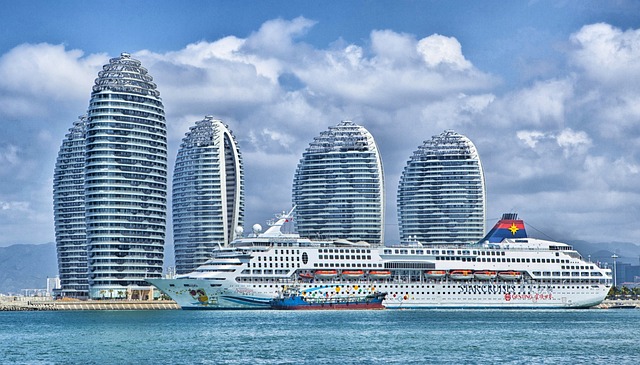As China's urban landscape faces an unprecedented threat from land subsidence, new satellite data reveals that nearly one-third of its urban population is at risk of their cities sinking. This alarming trend, driven by human activities such as groundwater withdrawal, underscores the urgent need for innovative solutions and comprehensive strategies. In this article, we delve into the latest research, explore the impacts on major cities like Beijing, Tianjin, and Shanghai, and highlight the critical role of expos like WIETEC and Watertech China in addressing this pressing issue. Join us as we uncover the hidden dangers beneath our feet and the path forward to safeguard our urban environments.

New satellite data has uncovered a hidden threat to China's urban centers: land subsidence. This often-overlooked hazard is now coming into sharp focus thanks to groundbreaking research by scientists from the University of East Anglia (UEA) and Virginia Tech.
Published in the journal Science, Prof. Robert Nicholls of UEA's Tyndall Centre for Climate Change Research and Prof. Manoochehr Shirzaei of Virginia Tech and the United Nations University for Water, Environment, and Health, Ontario, emphasize the significance of this new research. The study employs advanced satellite technology to meticulously map land movement across China, revealing a troubling trend in urban areas.
According to the research, 82 cities, home to nearly 700 million people, are experiencing significant land subsidence. The findings are stark: 45% of the urban regions studied are sinking, with 16% subsiding at a rate of 10mm or more per year.
While this precise measurement of subsidence is a major step forward, Nicholls and Shirzaei caution that it is just the beginning. To effectively predict and mitigate future subsidence, comprehensive models must be developed that account for all contributing factors, including human activities and climate change.
This new understanding calls for urgent action to address the underlying causes and to protect the millions of people living in sinking cities across China.
Addressing the Impacts of Subsidence on Urban Infrastructure
Nationally, an estimated 270 million urban residents in China are grappling with land subsidence, with nearly 70 million experiencing rapid subsidence of 10mm or more per year. Notable hotspots include major cities like Beijing and Tianjin.
Coastal cities, such as Tianjin, face an exacerbated risk as land subsidence amplifies the impacts of climate change and rising sea levels. This phenomenon is reminiscent of the devastating flooding caused by Hurricane Katrina in New Orleans in 2005, where sinking sea defenses played a significant role in the disaster.
Shanghai, China's largest city, has subsided by up to 3 meters over the past century and continues to sink. When combined with sea-level rise, the area of urban land in China that could fall below sea level may triple by 2120, potentially affecting 55 to 128 million residents. Without a robust societal response, this scenario could lead to catastrophic consequences.
Mitigation Strategies
"Subsidence jeopardizes the structural integrity of buildings and critical infrastructure, while exacerbating the impacts of climate change, especially in coastal cities where it amplifies sea-level rise," said Prof. Robert Nicholls, an expert in sea-level rise, coastal erosion, and flooding adaptation, who was not involved in the study.
Human activities are the primary culprits behind urban subsidence. The most significant factor is groundwater withdrawal, which lowers the water table. This, combined with geological conditions and the weight of buildings, leads to the sinking of urban areas.
In Osaka and Tokyo, halting groundwater withdrawal in the 1970s effectively stopped or greatly reduced city subsidence, demonstrating this as a successful mitigation strategy. However, other factors, such as traffic vibration and tunneling, also contribute locally. For instance, Beijing experiences sinking of 45mm per year near subways and highways. Although natural land movements occur, they are generally much smaller than those induced by human activities.
While human-induced subsidence was previously recognized in China, Profs. Nicholls and Shirzaei emphasize that these new findings underscore the urgent need for a national response. This issue is not confined to China; susceptible cities worldwide face similar challenges, making it a global concern.
Connecting Research with Action at WIETEC and Watertech China
They urge the research community to transition from merely measuring subsidence to understanding its implications and supporting effective responses. While new satellite measurements provide detailed subsidence data, more development is needed in methods to collaborate with city planners to address these issues. Coastal cities in China and globally require particular attention.
"Many cities and regions worldwide are developing strategies to manage the risks of climate change and sea-level rise," said Prof. Nicholls. "We need to leverage this experience to also tackle the threat of subsidence, which is more prevalent than currently recognized."
WIETEC, an expo dedicated to the environmental industry and green technologies, and its daughter show Watertech China, focused on water and wastewater treatment and water technologies in general, play a crucial role in addressing these challenges. By bringing together industry leaders, researchers, and policymakers, these events provide a platform for sharing knowledge and developing innovative solutions to combat land subsidence and its associated risks.
These expos are not just about showcasing the latest technologies but also about fostering collaboration and driving forward-thinking strategies to ensure sustainable urban development. As subsidence and other environmental challenges become more pressing, the role of WIETEC and Watertech China in facilitating these discussions and solutions becomes increasingly vital.
